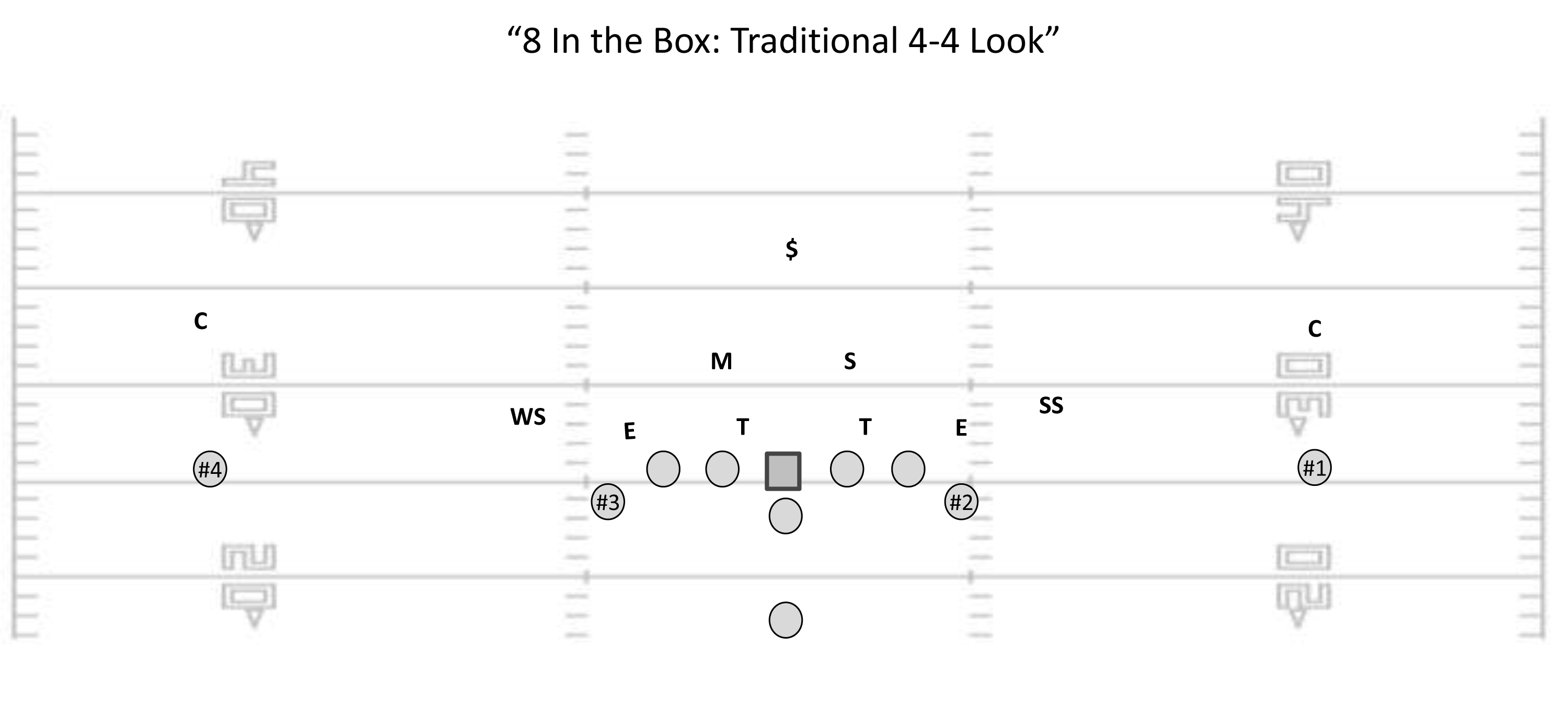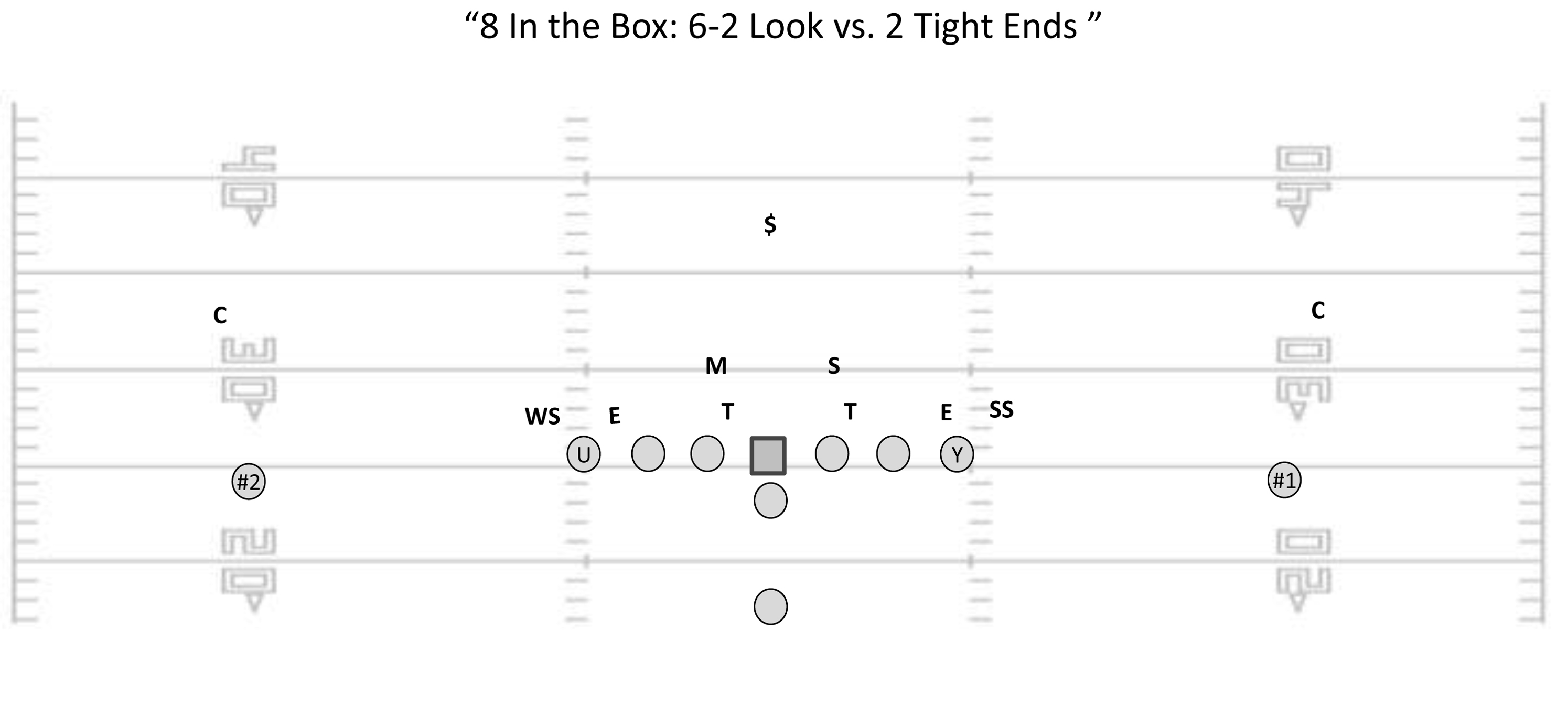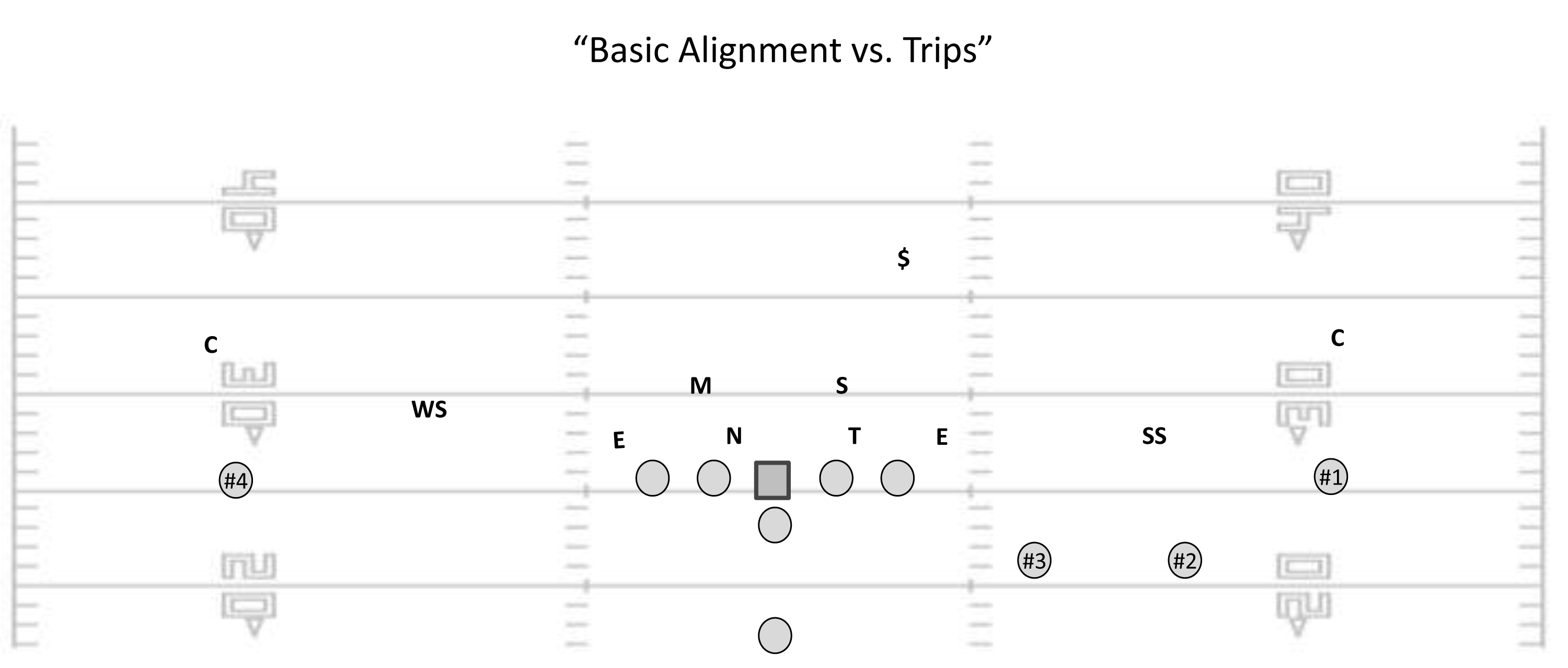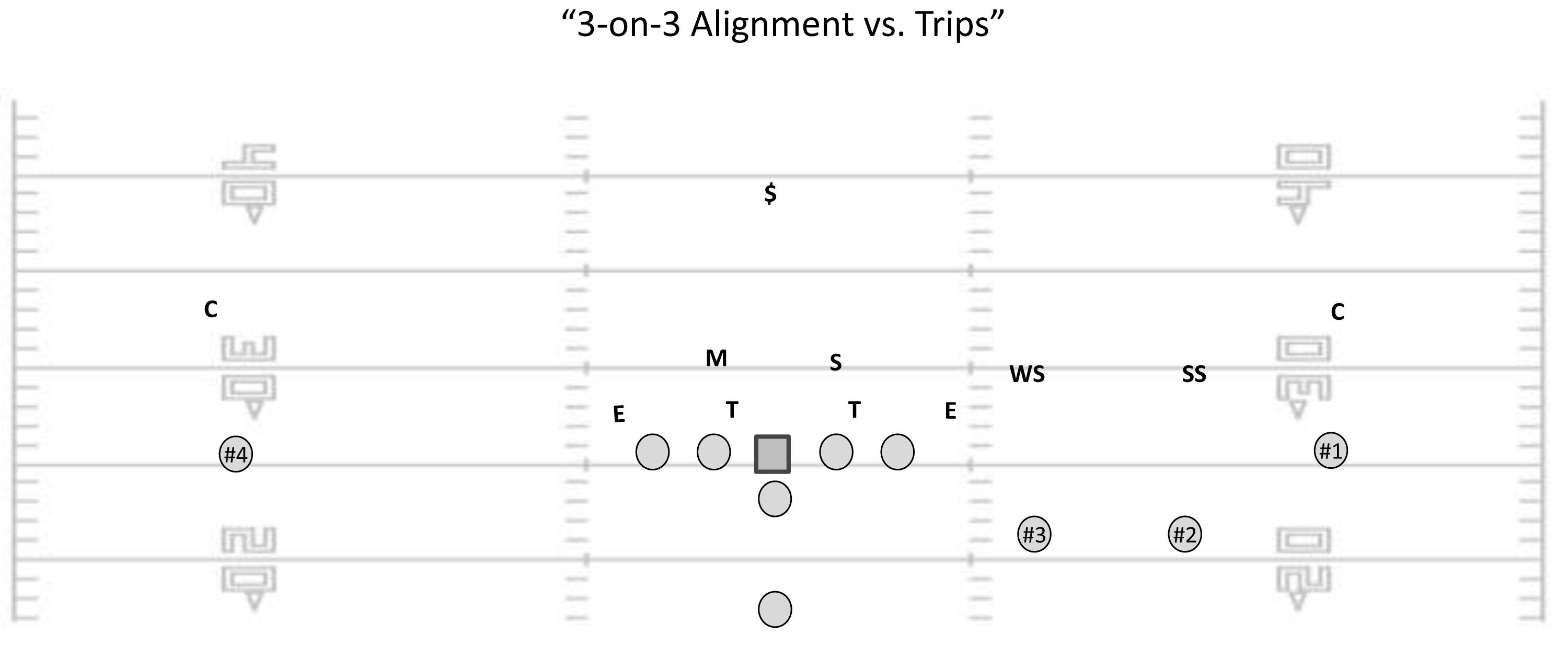Article CategoriesAFM Magazine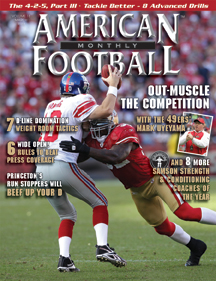
|
Adapting Your D – Adjust Your 4-2-5 to deal with the special formations you will see.by: Frank DiCoccoAssistant Coach and Player Development Director, Stillman College © More from this issue The 4-2-5 defensive scheme provides an effective approach to defending and attacking the various styles of offense currently found in today’s game. Due to its versatility and personnel capabilities, the 4-2-5 also offers a number of simple ways to adjust to a variety of formations. Here are a series of basic, yet effective, adjustments that can be made when facing special offensive formations, such as trips, tight end trips, double tight end, and heavy backfield sets. The most basic approach to defending the trips formation is by aligning in a 2-vs-3 look, with one safety playing over the top of the trips side. In a base 4-2-5, cover 3 approach, this would entail having the corner and strong safety aligned over the #1 and #2 receivers, with the free safety playing in the deep-middle of the field, shaded over to the trips side (See Diagram 1).
Diagram 1 Basic Alignment vs. Trips How much the free safety is shaded over, as well as the depth at which he aligns, can be determined by the player’s overall range and athletic ability, or by his assignment in the given coverage that is called. The 2-vs-3 alignment is well-suited for a zone coverage like cover 3. Another possible adjustment to the trips formation is a 3-vs-3 alignment, in which the weak safety comes all the way across the field (to the trips side) and lines up over one of the three receivers. A simple alignment using this approach would involve playing the cornerback over the #1 receiver, the strong safety over the #2 receiver, and the weak safety over the #3 receiver or tight end (See Diagram 2).
Diagram 2. 3-on-3 Alignment vs. Trips This alignment allows both zone and man coverage schemes to be employed. In a man coverage, such as cover 1, each of the three defensive backs would engage his corresponding receiver in the trips formation, with the free safety assuming the coverage responsibility for the deep-middle of the field. The 3-on-3 alignment is a simple, yet effective way to match-up against trips. It enables the defense to play both zone and man coverages, while also providing the ability to rush the passer from the trips side. It also has the ability to adjust to motion (to a 2 x 2 spread formation), and to transition into a different coverage (like a cover 3). Adjustments vs. 2-Tight End Sets and Run-Heavy Offenses The nature of the opponent’s offensive system and tendencies will largely determine how you align and assign your strong and weak safeties, but shifting them down into the box will give you the flexibility to attack both the run and the pass, as well as provide you with a stout presence up front. The added box defenders also become contain players, helping to set the edge against the run game and attempting to negate plays like the outside zone and stretch. The safety’s alignment also forces the tight ends to work inside on their release, often with a jam at the line of scrimmage, and pushes them back toward the middle of the field where the free safety can account for them in his zone coverage responsibilities. By bringing the strong and weak safeties into the box and creating a simple 4-4 alignment, you are able to employ the same front four looks that you are accustomed to, while having the ability to utilize your safeties in a number of creative ways, as both box defenders and potential pass-rushers. From the 4-4 look, you can continue to play virtually all the same coverages that you normally do as well. If anything, this simple shift makes it easier to deploy cover schemes such as the robber and cover 1. Both can be very effective against the two tight end formation and its tendencies (See Diagram 3).
Diagram 3. 8 in the Box – Traditional 4-4 Look The simplest and most effective approach when facing the two tight end formation is to walk-down your weak and strong safeties into the box, effectively turning them into true outside linebackers. This adjustment will give you the opportunity to align to the offense’s two tight end or heavy-backfield sets in the following ways:
Diagram 4. 8 in the box – 6-2 Look vs. 2 Tight Ends
|
|
| HOME |
MAGAZINE |
SUBSCRIBE | ONLINE COLUMNISTS | COACHING VIDEOS |
Copyright 2024, AmericanFootballMonthly.com
All Rights Reserved


